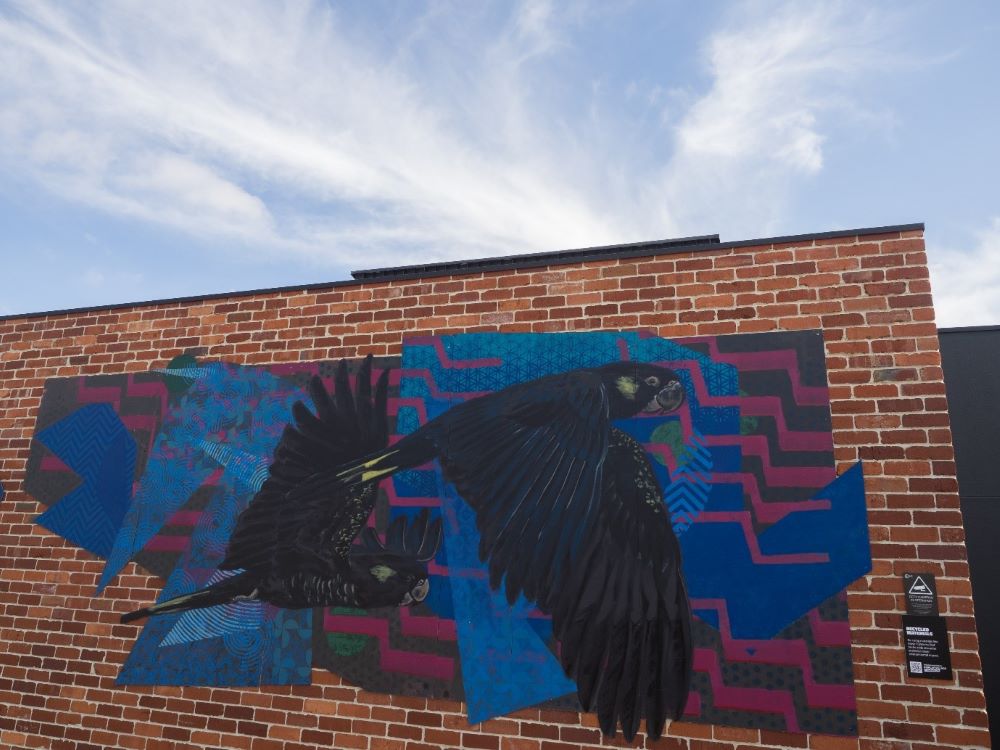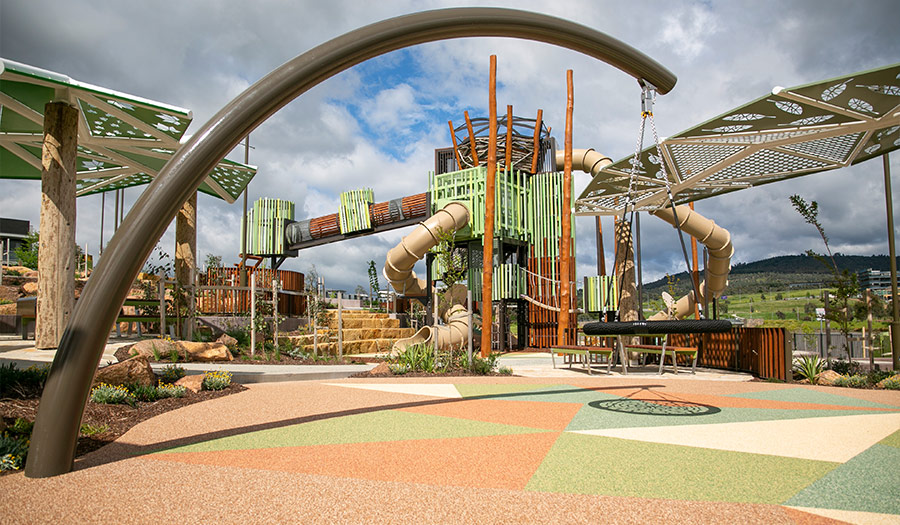Using circular materials to minimise waste
Building a suburb, home or garden can be resource intensive. In fact, construction and demolition contributes to nearly 44% of Australia’s total waste, with materials like concrete, bricks, plasterboard, metals, glass, soil, sand and vegetation all ending up in landfill.
In fact, the National Waste Report 2022 noted that in 2020/21, Australia generated an estimated 75.8 million tonnes of waste, equivalent to 2.95 tonnes per person.
According to the report, the largest waste category was ‘building and demolition materials’, at 25.1 million tonnes. While the Australian Bureau of Statistics found just over half of all waste was sent for recycling, according to the latest available figures for 2018-2019.
So there is significant room to increase this further through the use of what are known as circular materials. This term is related to circular economies, where we aim to create closed-loop systems rather than traditional linear modes of production. Reusing materials, using materials with recycled component/s or turning old materials into brand new ones all come under the use of circular materials and reduce the overall amount of waste we produce.
As part of our Sustainability Strategy, we’re always looking for opportunities to make use of pre-used or recycled materials that can reduce our impact on the environment and our overall carbon emissions.
Showcasing circular at our Innovation Precinct
The Innovation Precinct at the Display Village in Whitlam showcases ways to reuse and recycle building materials and explore materials with a lower environmental impact or 'embodied energy' (the amount of energy taken to create a product).
Some of the sustainable, circular materials we have used across the precinct include:
- Recycled Canberra Reds bricks for face brickwork. Not only does this keep existing materials in use, but it maintains a connection with Canberra’s much-loved red brick home designs that were fed by the Yarralumla Brickworks up until 1976.
- Using bricks and landscape materials from other Suburban Land Agency sites and sales suites ensures we are reusing our own materials as we move on to different projects.
- Cupolex Floors and Footing Systems for building slabs. These are manufactured from 100% recycled material and are polystyrene-free. Using this system as part of the slab construction for the homes within our Innovation Precinct reduced the amount of concrete needed. Concrete has high embodied energy and so using less of it is a great sustainable choice.
- Recycled Concrete Components to building slabs. The cement content in the slabs of the Innovation Precinct homes has been reduced by 30% (measured by mass) and contains at least 40% coarse aggregate. This aggregate is crushed as a slag aggregate or another alternative material.
- Recycled asphalt made from plastic materials such as printer cartridge toners and bottles has been used for the Display Village car park. The car park is a perfect location to trial the use of recycled materials as it doesn’t experience as much traffic as a road, and will be around for the life of the Display Village, before being transformed back into a residential block.
We've also included materials that are high-quality, durable and repairable. This decreases the likelihood products will end up in landfill and increases the likelihood they could even be passed on to another use if a home renovation is on the cards.

Reusing what we can
It's not just about introducing new (and recycled!) materials. Circular thinking also includes using what you have.
In all of the suburbs we design and build, any rocks and soil pulled from the ground during construction, or trees that are unsafe and cut down, are stockpiled and used as valuable resources during landscape design.
These elements are ultimately all placed back around the suburb they were ‘collected from’ to create interesting landscape features in parkland areas where they also serve to create habitats for native fauna.
Recycled materials in our playgrounds
Playgrounds are a perfect place to show off circular material innovations.
- Our Ruth Park Playground in Coombs has used concrete with recycled glass in it, which is buffed to show the colours of the glass.
- Many of the tables and chairs in our new playgrounds, such as Blue Poles Park in Whitlam, have furniture made from mostly recycled plastic content.
- Softfall is installed under equipment to keep play safe, and is often made with recycled tyres which provide a bouncy, soft place to land.
- Nature play - playing around natural elements like logs and rocks - inherently reuses materials when designed into a playground. Blue Poles Park and the Ruth Park playspace both incorporate nature play elements into their design.
With a significant proportion of Australia's waste stemming from building and demolition materials, transitioning to circular economies is vital. By reusing materials, incorporating recycled components, and transforming old resources into new ones, we can effectively decrease overall waste production.
From recycled Canberra Reds bricks to sustainable flooring systems and concrete components, we prioritise durability and reparability to decrease the likelihood of materials ending up in landfill.
